A multimeter is a device that measures continuity, voltage, current, and resistance. A clamp meter is a type of multimeter that can be used to measure AC or DC current by clamping the probes around a conductor. Both meters are essential for any DIY'er or electrician. Knowing how to use them will allow you to troubleshoot most electrical problems. In this blog post, we will discuss the functions of each type of meter and how to use them.
What is a multimeter?
A multimeter is a device that measures multiple electrical properties, including voltage, current, and resistance. Multimeters can be used to troubleshoot electrical problems in a variety of devices and systems.
What are the different types of a multimeter?
Digital multimeters:
Digital multimeters use a digital display to show measurements. They're more accurate than analog multimeters and can measure AC and DC voltage, resistance, and current. Many also have features like backlighting, auto-ranging, and hold functions.

Analog multimeters:
Analog multimeters have a needle that moves along a scale to show measurements. They're less expensive than digital multimeters but are not as accurate. Analog multimeters can measure AC and DC voltage, resistance, and current.
Multimeter features:
Most multimeters have basic features like the ability to measure AC and DC voltage, resistance, and current. But some models also include additional features like backlighting, auto-ranging, and hold functions.
Backlighting:
Backlighting allows you to see the display in low-light conditions. This can be helpful when working in dark areas or when the measuring environment is bright (like outdoors in direct sunlight).
Auto-ranging:
Auto-ranging means the multimeter will automatically select the appropriate range for the measurement being taken. This is helpful because it eliminates the need to manually select the range (which can be confusing and time-consuming).
Hold function:
The hold function allows you to "freeze" measurements on the display. This can be helpful if you need to take a measurement but can't write it down right away. Simply press the hold button and the measurement will stay on the screen until you press it again.
What is a clamp meter?
A clamp meter is an electrical testing tool that is used to measure the current in a wire without having to make direct contact with the wire. This type of meter is very useful in situations where it would be difficult or dangerous to access the wire directly. Clamp meters can also be used to measure other electrical parameters, such as voltage and resistance.

How does a clamp meter work?
A clamp meter consists of two main parts: the sensor and the display. The sensor is placed around the wire that you want to measure, and the display shows the readings. Most clamp meters also have other features, such as a built-in flashlight or a backlit display, which can be very helpful when working in dark or confined spaces.
What are the different applications of multimeters?
Multimeters are one of the most versatile tools that you can have in your toolbox. They can be used for a variety of tasks, from troubleshooting electrical problems to measuring voltage, current, and resistance.
Some of the different applications of multimeters include:
Measuring voltage:
You can use a multimeter to measure the voltage of an electrical circuit. This is useful for troubleshooting electrical problems or testing for voltage drops.
Measuring current:
You can use a multimeter to measure the current flowing through an electrical circuit. This is useful for troubleshooting electrical problems or testing for the excessive current draw.
Measuring resistance:
You can use a multimeter to measure the resistance of an electrical circuit. This is useful for troubleshooting electrical problems or testing for resistance breaks.
Testing diodes and transistors:
You can use a multimeter to test diodes and transistors. This is useful for troubleshooting electrical problems or testing electronic components.
Checking continuity:
You can use a multimeter to check for continuity in an electrical circuit. This is useful for troubleshooting electrical problems or testing for broken wires.
What are the benefits of using a clamp meter?
There are many benefits to using a clamp meter, including:
Safety:
Clamp meters allow you to measure current without coming into contact with the live wire, which is much safer than using a traditional meter.
Accuracy:
Clamp meters are very accurate, and they can be used to measure very small changes in current.
Versatility:
Clamp meters can be used to measure a variety of electrical parameters, including voltage, resistance, and capacitance.
Convenience:
Clamp meters are small and portable, so they can be easily carried in a toolbox or backpack.
What are the different types of clamp meters?
There are a few different types of clamp meters, including:
Digital clamp meters:
Digital clamp meters are the most common type of clamp meter. They use a digital display to show readings, and they often have other features, such as a backlit display or a built-in flashlight.
Analog clamp meters:
Analog clamp meters are less common than digital models, but they can be very useful in certain situations. Analog clamp meters use a needle to show readings on a dial, which can be easier to read in low-light conditions.
What are the different features of clamp meters?
Clamp meters come with a variety of features, including:
Basic features:
Most clamp meters have basic features, such as a digital display, auto-ranging, and data hold.
Advanced features:
Some clamp meters have advanced features, such as true RMS, low pass filter, and peak hold. These features can be very helpful for certain applications.
Specialized features:
There are also some clamp meters that have specialized features, such as AC/DC current measurement and temperature measurement. These types of clamp meters are often used by electricians and HVAC technicians.
What are the different applications of clamp meters?
Clamp meters can be used for a variety of applications, including:
Measuring current: Clamp meters are most commonly used to measure the current in a wire. This is very useful for troubleshooting electrical problems and checking for loose connections.
Measuring voltage:
Clamp meters can also be used to measure the voltage in a wire. This is helpful for determining if there is an issue with the wiring or the electricity supply.
Checking circuits:
Clamp meters can be used to check circuit breakers and fuses to see if they are working properly.
Testing equipment:
Clamp meters can be used to test electrical equipment, such as motors and generators.
Frequently Asked Questions:
Why do I need a clamp meter?
There are many reasons why you might need a clamp meter. For instance, if you're an electrician, you might use one to measure the current in a circuit. Or, if you're a homeowner, you might use one to check for electrical problems in your home's wiring.
Clamp meters are also useful for measuring the current in car batteries and other devices that use DC power. And, if you're a technician who works with electronic equipment, you might use a clamp meter to test for AC or DC power leaks.
As you can see, there are many reasons why someone might need a clamp meter. If you think you might need one, be sure to check out our selection of clamp meters. We offer a wide variety of models to choose from, so you're sure to find the perfect one for your needs.
Do I need a multimeter and a clamp meter?
You might need both a multimeter and a clamp meter depending on the job you're working on.
If you're troubleshooting electrical circuits, you'll need a multimeter to measure voltage, current, and resistance. A clamp meter can also be used to measure current, but it's more useful for measuring voltage in live wires.
So, if you're working on an electrical project, it's a good idea to have both a multimeter and a clamp meter on hand. That way, you'll be able to take all the measurements you need to get the job done right.
What kind of meters do electricians use?
Electricians use a variety of different types of meters, depending on the specific job they are working on. The most common type of meter used by electricians is a multimeter, which can measure voltage, current, and resistance. Other types of meters that electricians may use include ohmmeters, ammeters, and voltmeters. Each type of meter has its own specific purpose and function, so it is important for electricians to be familiar with the different types of meters available and how to use them properly.
Conclusion:
A multimeter is a must-have piece of equipment for every electrician or homeowner. It is a multipurpose instrument capable of measuring voltage, current, and resistance. A clamp meter is a type of multimeter that is used to measure current. Both of these tools are required for troubleshooting electrical problems. A clamp meter is a type of multimeter that is mostly used to measure current. Multimeters and clamp meters are essential tools for anyone who works with or around electricity.



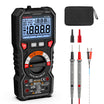

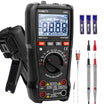
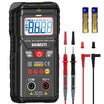
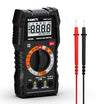
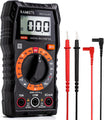
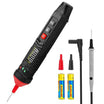
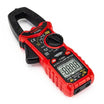
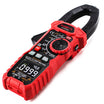
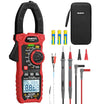

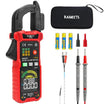
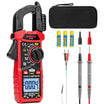
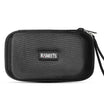
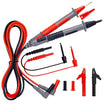


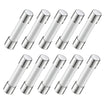
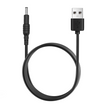
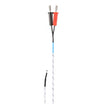
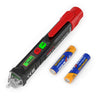

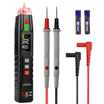
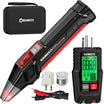
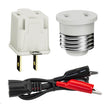
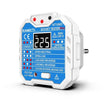
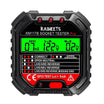
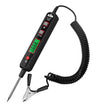
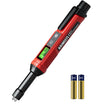
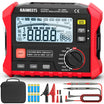
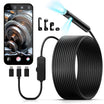
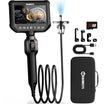

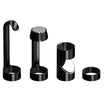
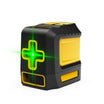
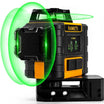

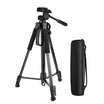
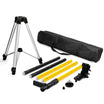
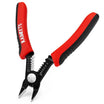
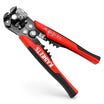
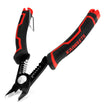
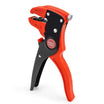
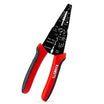
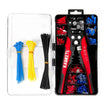
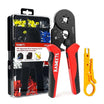
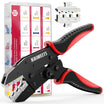
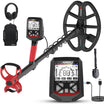
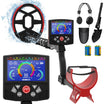
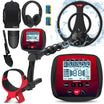
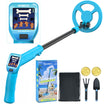
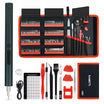
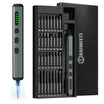
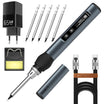
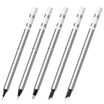
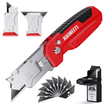
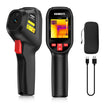
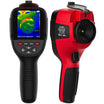
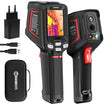
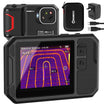




Commenta
Nota che i commenti devono essere approvati prima di essere pubblicati.
Questo sito è protetto da hCaptcha e applica le Norme sulla privacy e i Termini di servizio di hCaptcha.